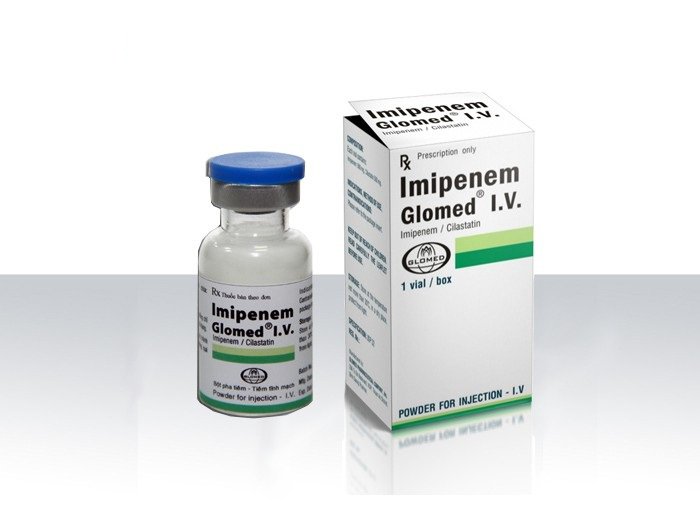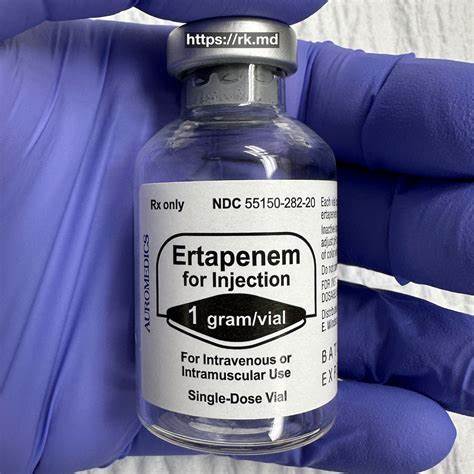1. Introduction
Antibiotics are among the most important tools in modern medicine. They help us treat infections and save lives. However, not all antibiotics are created equal. Some are stronger than others, and carbapenems are among the most powerful. Carbapenems are often called “last-resort antibiotics” because doctors use them when other antibiotics fail. They are strong, broad-spectrum antibiotics that can kill many types of harmful bacteria — especially the ones that are resistant to other drugs. In this guide, we will explore carbapenems in a simple and detailed way, including what they are, how they work, their different types, and where they are used.
Table of Contents
2. What Are Carbapenems? (Definition)

Carbapenems are a group of beta-lactam antibiotics that are used to treat serious bacterial infections, especially when other antibiotics don’t work. They are called “beta-lactam” antibiotics because they contain a chemical ring structure called a beta-lactam ring, which is also found in penicillin and cephalosporins. What makes carbapenems special is:
- Their broad-spectrum ability — they kill a wide variety of bacteria.
- Their resistance to most beta-lactamases, which are enzymes that bacteria produce to destroy antibiotics.
They are used only when necessary to avoid the development of antibiotic resistance.
3. How Do Carbapenems Work? (Mechanism of Action)
It works by targeting the cell wall of bacteria.
Here’s how it works step-by-step:
- Bacteria have a protective cell wall that gives them shape and prevents bursting.
- It binds to enzymes (called penicillin-binding proteins, or PBPs) that bacteria use to build their cell walls.
- By blocking these enzymes, carbapenems stop the bacteria from building a strong cell wall.
- Without a wall, the bacteria burst and die.
This action makes carbapenems bactericidal, meaning they kill bacteria rather than just stop their growth.
Also, they are:
- Resistant to most beta-lactamases, including extended-spectrum beta-lactamases (ESBLs), which many dangerous bacteria produce.
- Able to enter Gram-negative bacteria (which are usually harder to kill) through small channels called porins.
4. Types of Carbapenems
There are several carbapenem antibiotics available for medical use. Each one has its own properties, but they all work in a similar way.
1. Imipenem

- The first carbapenem developed.
- Given with cilastatin, which prevents it from being broken down by the kidneys.
- Used for serious infections like pneumonia, sepsis, and intra-abdominal infections.
2. Meropenem

- Similar to imipenem but doesn’t need cilastatin.
- Has better activity against Gram-negative bacteria.
- Commonly used in hospitals for serious infections.
3. Ertapenem

- Has a longer half-life, so it can be given once a day.
- Less active against Pseudomonas aeruginosa and Acinetobacter.
- Often used for abdominal infections, diabetic foot infections, and community-acquired pneumonia.
4. Doripenem

- Has strong activity against Pseudomonas and other resistant bacteria.
- Used in hospital settings for high-risk patients.
5. Newer Combinations
To fight resistance, carbapenems are sometimes combined with other drugs:
- Meropenem-vaborbactam – effective against carbapenemase-producing bacteria.
- Imipenem-cilastatin-relebactam – newer combination for resistant infections.
5. What Bacteria Do Carbapenems Work Against?
They are broad-spectrum, meaning they can kill:
- Gram-positive bacteria (e.g., Streptococcus, Staphylococcus aureus)
- Gram-negative bacteria (e.g., E. coli, Klebsiella, Pseudomonas)
- Anaerobic bacteria (which live without oxygen)
- ESBL-producing bacteria that resist other antibiotics
However, carbapenems do not work against:
- Some carbapenemase-producing bacteria (e.g., CRKP – Carbapenem-Resistant Klebsiella pneumoniae)
- MRSA (Methicillin-resistant Staphylococcus aureus)
- VRE (Vancomycin-resistant Enterococci)
6. Uses of Carbapenems in Medicine
Doctors use carbapenems only when truly needed, often in hospital settings. Common uses include:
1. Serious Infections
- Sepsis (bloodstream infections)
- Pneumonia (especially hospital-acquired)
- Infections in intensive care patients
2. Multidrug-Resistant Infections
- Infections caused by bacteria that don’t respond to regular antibiotics
- ESBL-producing E. coli or Klebsiella
3. Intra-abdominal Infections
Peritonitis, abscesses, infections following surgery
4. Complicated Urinary Tract Infections
Especially with resistant bacteria or kidney infections
5. Skin and Soft Tissue Infections
In diabetic patients or after trauma or surgery
6. Meningitis
In some cases caused by resistant Gram-negative bacteria Carbapenems are usually given by injection or IV because they are not absorbed well when taken by mouth.
7. Side Effects of Carbapenems
While carbapenems are powerful, they can also cause side effects:
- Nausea, vomiting, diarrhea
- Rashes or allergic reactions
- Seizures (especially with imipenem in high doses or in people with kidney problems)
- Changes in liver or kidney function tests
- Superinfections (overgrowth of resistant bacteria or fungi, like C. difficile)
Doctors monitor patients closely while using carbapenems, especially if they have other health conditions.
8. Resistance to Carbapenems
Unfortunately, some bacteria are now resistant to carbapenems. This is a serious concern in healthcare.
How resistance develops:
- Bacteria produce carbapenemases (enzymes that destroy carbapenems)
- They alter their porins, blocking drug entry
- They use efflux pumps to push the drug out of the cell
Resistant bacteria include:
- CRKP (Carbapenem-Resistant Klebsiella pneumoniae)
- Pseudomonas aeruginosa
- Acinetobacter baumannii
To fight this, researchers are developing new combinations and better infection control in hospitals.
9. Role in Combating Superbugs
Carbapenems are often used when nothing else works. They help save lives in situations like:
- Bacteria resistant to penicillin and cephalosporins
- Outbreaks in hospitals
- Post-surgical infections in critical patients
But using them too much can make bacteria resistant — so doctors use them only when absolutely necessary.
10. Global Efforts to Use Carbapenems Wisely
To prevent overuse, many countries have guidelines for antibiotic stewardship. These include:
- Using the right antibiotic at the right time
- Not using carbapenems for mild infections
- Testing bacteria for resistance before treatment
- Educating doctors and patients about responsible use
Organizations like the World Health Organization (WHO) and CDC (Centers for Disease Control and Prevention) are promoting global action against antibiotic resistance.
11. Summary Table
| Topic | Details |
|---|---|
| What are Carbapenems? | Strong beta-lactam antibiotics used to treat serious infections |
| How do they work? | Inhibit bacterial cell wall formation, leading to bacterial death |
| Types | Imipenem, Meropenem, Ertapenem, Doripenem, combinations with inhibitors |
| Spectrum | Broad-spectrum (Gram-positive, Gram-negative, anaerobes) |
| Used For | Sepsis, pneumonia, UTIs, intra-abdominal infections, ESBL infections |
| Side Effects | Nausea, allergic reactions, seizures (rare), superinfections |
| Resistance Concerns | CRKP, carbapenemases, overuse can lead to resistance |
| Administration | Intravenous or intramuscular only |
12. Conclusion
Carbapenems are among the most important antibiotics in modern medicine. They are lifesaving drugs that can defeat infections that other antibiotics can’t. But they are not magic bullets — using them too often or in the wrong way can lead to dangerous resistance.
It’s up to doctors, patients, and healthcare systems to use carbapenems wisely. With careful use, we can preserve their power for future generations and keep fighting back against deadly bacterial infections.
FREQUENTLY ASKED QUESTIONS
What are carbapenems?
Carbapenems are powerful, broad-spectrum antibiotics used to treat serious bacterial infections, especially when other antibiotics fail. They belong to the beta-lactam class and are often called “last-resort” antibiotics.
How do carbapenems kill bacteria?
Carbapenems kill bacteria by blocking the enzymes they use to build their cell walls. Without a proper wall, bacteria cannot survive and eventually burst and die.
When are carbapenems used in medicine?
Carbapenems are used for life-threatening infections like sepsis, pneumonia, complicated urinary tract infections, and infections caused by multidrug-resistant bacteria, especially in hospital settings.
Related Articles




